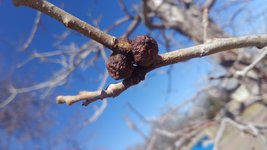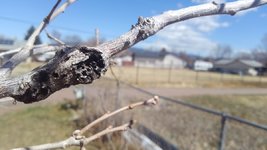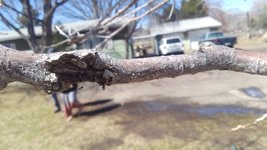There are galls caused by insect larvae. Ichneumon wasps in particular can cause galls, quite common on oak. No specific need to wipe down the tools per se.
However, there is a second class of malaise called a canker. Superficially galls and cankers can look similar. Canker growths are caused by microscopic organisms, some are caused by bacteria, some are caused by fungi, some are caused by other one celled organisms, one is an amoeba like organism. These can be carried by your cutting tools and can possibly infect the next tree you cut. It is a good practice to wipe down your cutting tools every time you move from one tree to the next. 70% Isopropyl alcohol or 70% ethanol will work. and note the 70% works better than the 90%.
So as a general practice, regardless whether the tree in front of you is healthy or not healthy. It is a good horticultural practice to wipe your tools down with a rag or swab with 70% alcohol before starting on the next tree. And the good news, 70% alcohol will also kill viruses, and while bonsai artists do not seem to be concerned with plant viruses, I am certain there are a fair number of viruses circulating in populations of cutting grown trees. They may not be visibly affecting our trees, but if you every wonder why a certain tree seems to lack vigor, it is possible a virus is in part contributing to the tree's lack of vigor.
So take a tip from the orchid people. WIPE DOWN YOUR TOOLS.
Darlene was right
@Cadillactaste
Its a good general practice.









